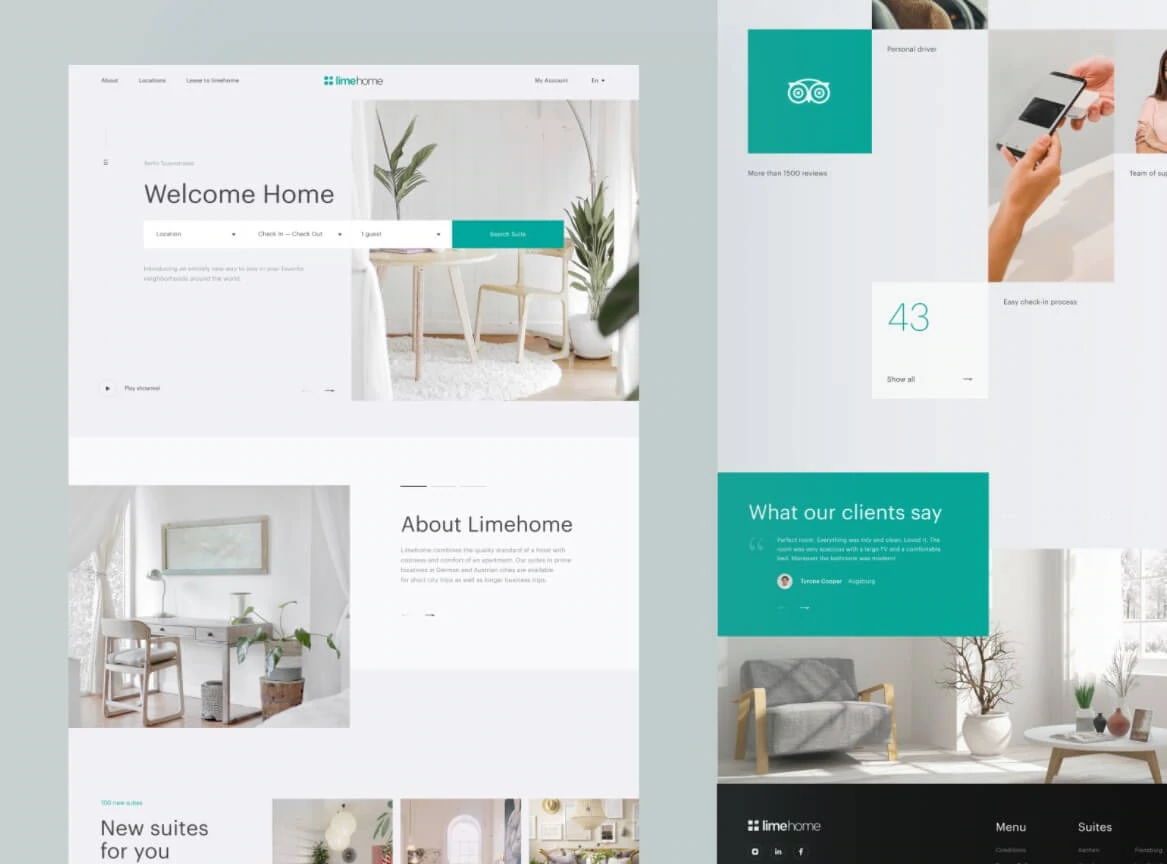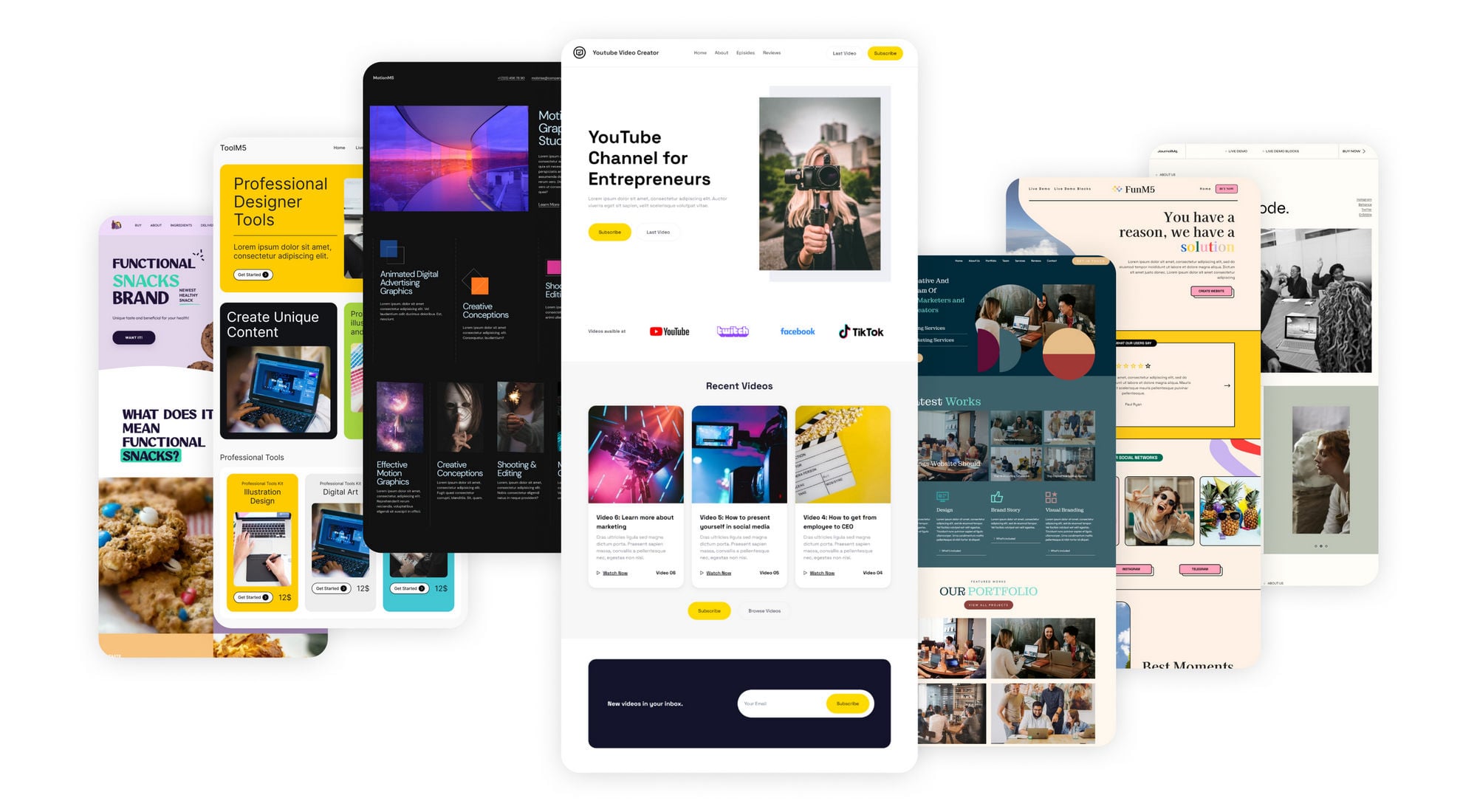Transform Your Online Visibility: Top Trends in Modern Site Layout
In the developing digital landscape, contemporary web site style fads play a crucial role in shaping how users interact with online content. Minimalist design aesthetics, the rise of dark mode, and a mobile-first approach are just a couple of components that can dramatically boost individual experience.
Minimalist Layout Looks
Minimal style looks have actually gotten considerable traction in modern site development, as developers look for to produce user-friendly experiences that prioritize capability. This layout philosophy stresses simplicity, stripping away unneeded aspects to concentrate on essential web content. By lessening interruptions, websites can boost individual engagement and facilitate much easier navigation.
The characteristic of minimal design consists of the efficient usage of whitespace, which supplies a orderly and tidy design. This approach not just improves readability yet also highlights vital info and phones call to action. Shade combinations in minimal styles usually feature neutral tones, enabling striking contrasts that guide the customer's attention to vital features.
Typography additionally plays an important role in minimalist appearances. Designers commonly go with clear and understandable typefaces that complement the general layout without overwhelming individuals. In addition, functionality is prioritized via responsive layout, making sure that minimalist designs perform well across different gadgets.
Inevitably, the minimal layout approach fosters an user-friendly user experience, making it simpler for site visitors to interact with material. As services significantly recognize the significance of efficient on the internet visibility, minimal design remains to be a fundamental pattern in modern-day internet site growth.

Dark Mode Popularity
As web designers prioritize user experience, dark mode has emerged as a popular feature that enhances aesthetic convenience and lowers eye pressure, specifically in low-light settings. This layout pattern enables individuals to switch the interface shades from light to dark, giving an extra calming experience for extended use.
The rise of dark setting can be credited to its capacity to enhance readability and focus. By reducing glow, it decreases diversions and assists users to engage even more deeply with web content. In addition, several individuals find that dark themes develop a smooth, modern visual, appealing to both individual preference and branding strategies.
Significant platforms, consisting of social networks and software applications, have actually embraced dark setting, suggesting its prevalent acceptance. Additionally, research study suggests that dark setting can add to battery preservation on OLED screens, making it a functional choice for mobile customers.
As dark mode remains to gain grip, internet designers have to consider its application in their tasks. Offering customers with the choice to toggle in between light and dark modes not just enhances access but likewise reveals a commitment to user-centric style, ultimately causing boosted fulfillment and engagement.
Mobile-First Method
Welcoming a mobile-first approach has actually come to be important in modern-day internet design, showing the expanding dependence on mobile phones for web accessibility. website design. With over half of global internet website traffic originating from tablet computers and smartphones, designers should focus on mobile customers to enhance engagement and ease of access
A mobile-first method entails designing a site for smaller screens before adapting it for larger screens. This technique advertises simpleness, making certain that essential content is prioritized and easily investigate this site navigable. By focusing on mobile design first, developers are encouraged to streamline features and eliminate unnecessary components that might mess the customer experience.
In addition, a mobile-first mindset cultivates boosted efficiency. Web sites enhanced for mobile gadgets usually pack quicker, as they require less information and transmission capacity. This not just improves user satisfaction but additionally favorably affects online search engine rankings, as site rate is an important aspect in SEO.
Additionally, a mobile-first strategy lines up with responsive design concepts, guaranteeing that websites operate effortlessly across numerous gadgets and screen dimensions. By adopting this strategy, organizations can successfully reach their audience, preserve individual interest, and inevitably drive conversions in a progressively mobile-centric digital landscape.
Immersive and interactive Aspects
The change toward mobile-first layout naturally leads to a higher emphasis on immersive and interactive elements, which boost user involvement and create remarkable experiences. Sites are no more static web pages; they are dynamic systems that welcome users to discover and communicate. This pattern incorporates a range of attributes, such as animations, video clip histories, and interactive infographics, all focused on recording attention and communicating details in an engaging way.
One substantial aspect of interactive design is making use of gamification, which incorporates game-like components right into websites to motivate individual involvement. This can take the kind of difficulties, incentives, or tests, cultivating a much deeper link with the web content. In addition, incorporating augmented or virtual reality can elevate the customer experience, permitting site visitors to involve themselves in a brand name's tale or product offering.
Additionally, responsive design plays a crucial role in ensuring these elements function seamlessly throughout tools. By focusing on interactive functions, brands can develop instinctive navigating and customized experiences tailored to customer choices. Eventually, embracing interactive and immersive aspects not just improves the aesthetic allure of a website however likewise drives individual retention and conversion, making it a critical trend in modern web site layout.
Sustainability in Website Design

Additionally, utilizing lasting holding remedies, such as web servers powered by renewable resource, can additionally minimize ecological influence (website design). Developers should also consider ease of access in their jobs, making sure that web sites are useful throughout numerous gadgets and systems, consequently prolonging their reach and minimizing the requirement for several versions or redesigns
One more secret aspect is utilizing sustainable website design structures and coding techniques that advertise effectiveness. This includes clean coding, which lessens the quantity of data transferred, and adopting Web content Distribution Networks (CDNs) to enhance resource distribution.
Ultimately, welcoming sustainability in internet style is not just a moral selection; it is a calculated advantage that resonates with eco aware consumers, fostering brand name loyalty while contributing favorably to the why not try here world.
Conclusion
Accepting modern trends in site layout is essential for improving online presence. The combination of interactive components fosters deeper links with customers, while sustainable design methods align with expanding ecological concerns.
In the progressing electronic landscape, modern-day website style patterns play a critical role in shaping exactly how individuals connect with on-line content. Minimalist design looks, the surge of dark setting, and a mobile-first strategy are simply a couple of components that can significantly enhance user experience.The shift toward mobile-first design naturally leads to a higher emphasis on immersive and interactive aspects, which improve individual interaction and produce unforgettable experiences.One considerable element of interactive style is the use of gamification, which integrates game-like aspects into sites to motivate user participation. Ultimately, welcoming immersive and interactive components not just improves the aesthetic appeal of a website yet additionally drives individual retention and conversion, making it an essential pattern in modern website layout.